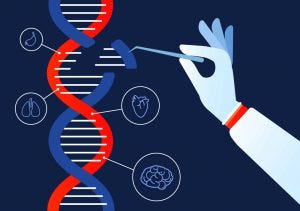December 22, 2021

The RNA drug sector has overcome some significant hurdles according to Alynlam Therapeutics CEO John Maraganore, who says industry efforts to work with these challenging molecules have laid the foundations for growth.
“The scientific obstacles are best defined here, small interfering RNA molecules are large. They’re charged. They’re susceptible to biological degradation. They’re also prone to activated immune sensor systems. And so the challenge of making drugs out of small interfering RNAs was really a formidable scientific challenge that needed to get addressed.”
Maraganore, who was speaking at BPI East in Boston in September, cited delivery as an example, explaining that efforts to find ways of ensuring RNA-based therapeutics reach their targets resulted in highly effective lipid and GalNac-based technologies.

Image: Stock Photo Secrets
“With those important technological advances at Alynlam we’ve been able to build a clinical pipeline that now has over a dozen programs from Phase one to phase four clinical studies, including one program that is in registration at present – patisiran – which is being under which is being reviewed for approval by both the FDA and in Europe by the EMA.
“And what’s exciting about this pipeline is that it just continues to grow. By the end of the year, we’ll be adding two more programs onto this chart. And we’ll probably have to go to multiple pages in the not-too-distant future, just given the scale and scope of how this pipeline is advancing.”
Maraganore said his confidence reflects the reproducibility and precision of Alnylam’s technologies combined with the focus on validated molecular targets.
New frontiers
And technology is likely to continue shaping Alynlam and the wider RNA drug sector going forward, according to Maraganore.
“The flow of new RNA based medicines is only continuing here at Alynlam over 25 programmes in active preclinical development across four tissues of interest right now, where we have delivery that we believe is robust and ready for clinical translation.
“We are expecting two to four new INDs per year, we’ll have two this year, probably more than that in 2022. And by the end of 2025, we expect to have four or more INDs per year coming out of our technology platform.
He also predicted collaborations with organizations like the UK biobank will play an important role in the RNA industry’s development.
“The UK Biobank is one great example, I can’t tell you how powerful the combination of human genetics with a precision based medicine platform like RNA AI has been.
“It has really transformed the work that we’ve done, not only to help us identify novel targets, like a novel target for the treatment of Nash called HST 17, b 13, but it’s also enabled significant enhancement of our understanding of targets that we’re already working on, in some cases targets, where we already have medicines that are on the market.
“And so this convergence of human genetics, with an RNA based strategy has been arguably one of the most powerful things that we’ve experienced here at Alynlam over the last five years.”
About the Author
You May Also Like




